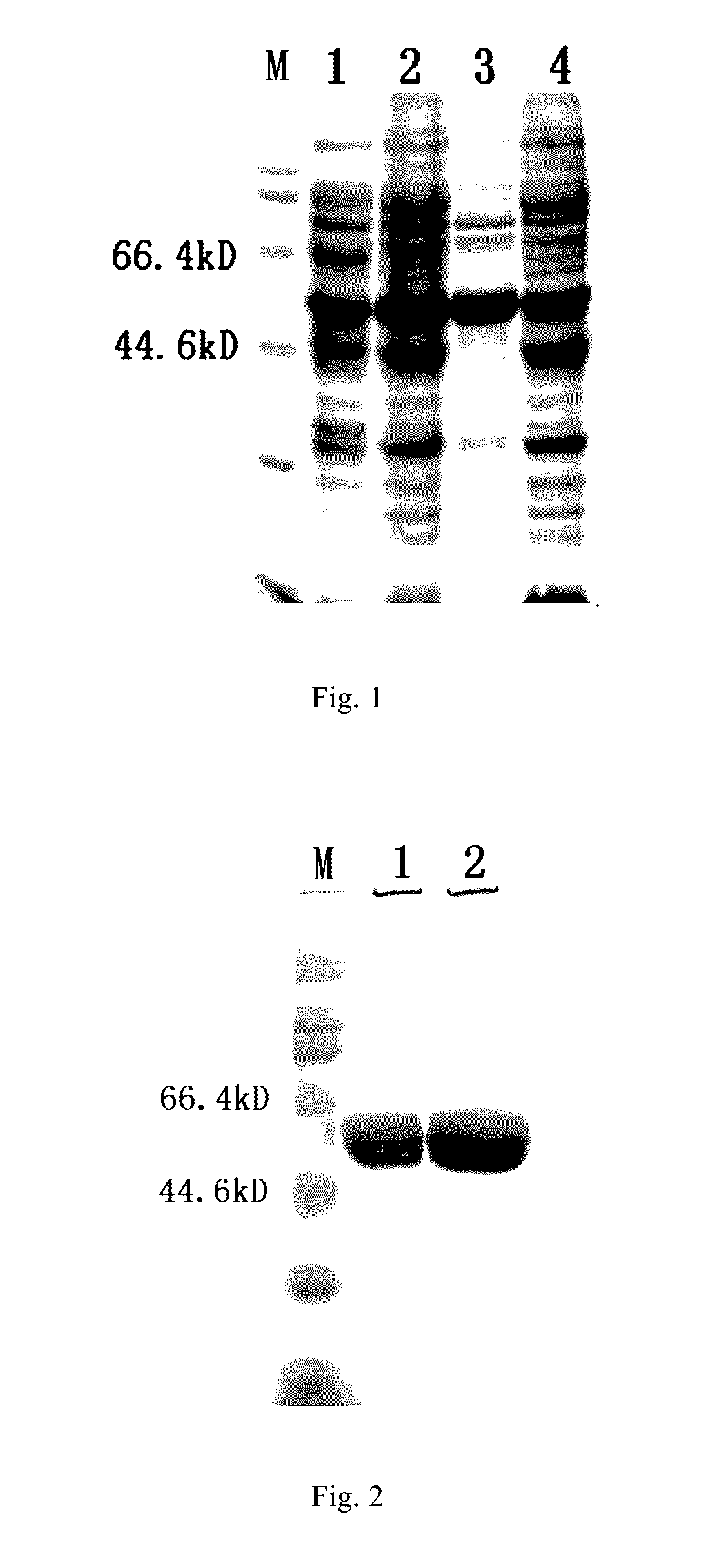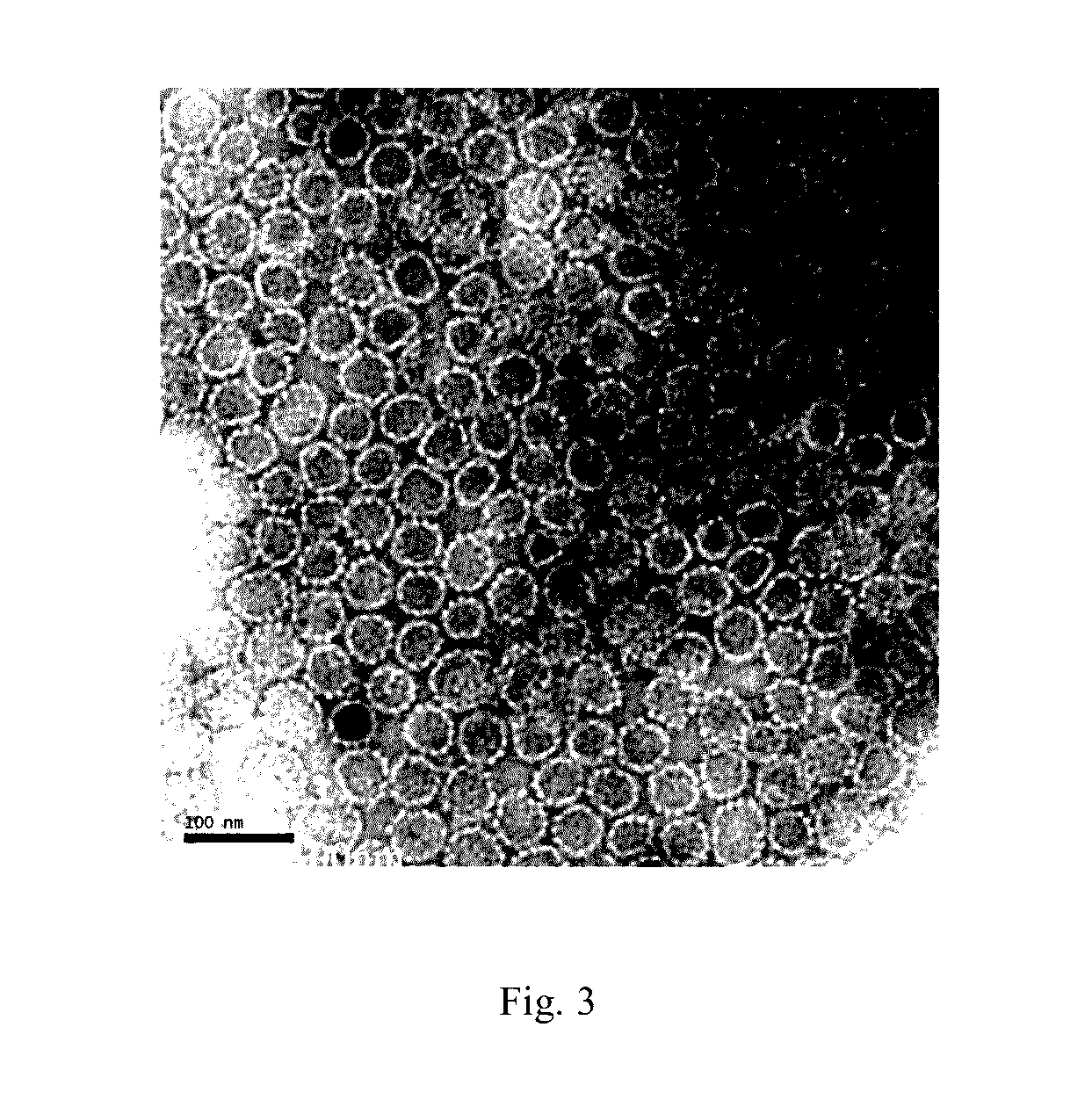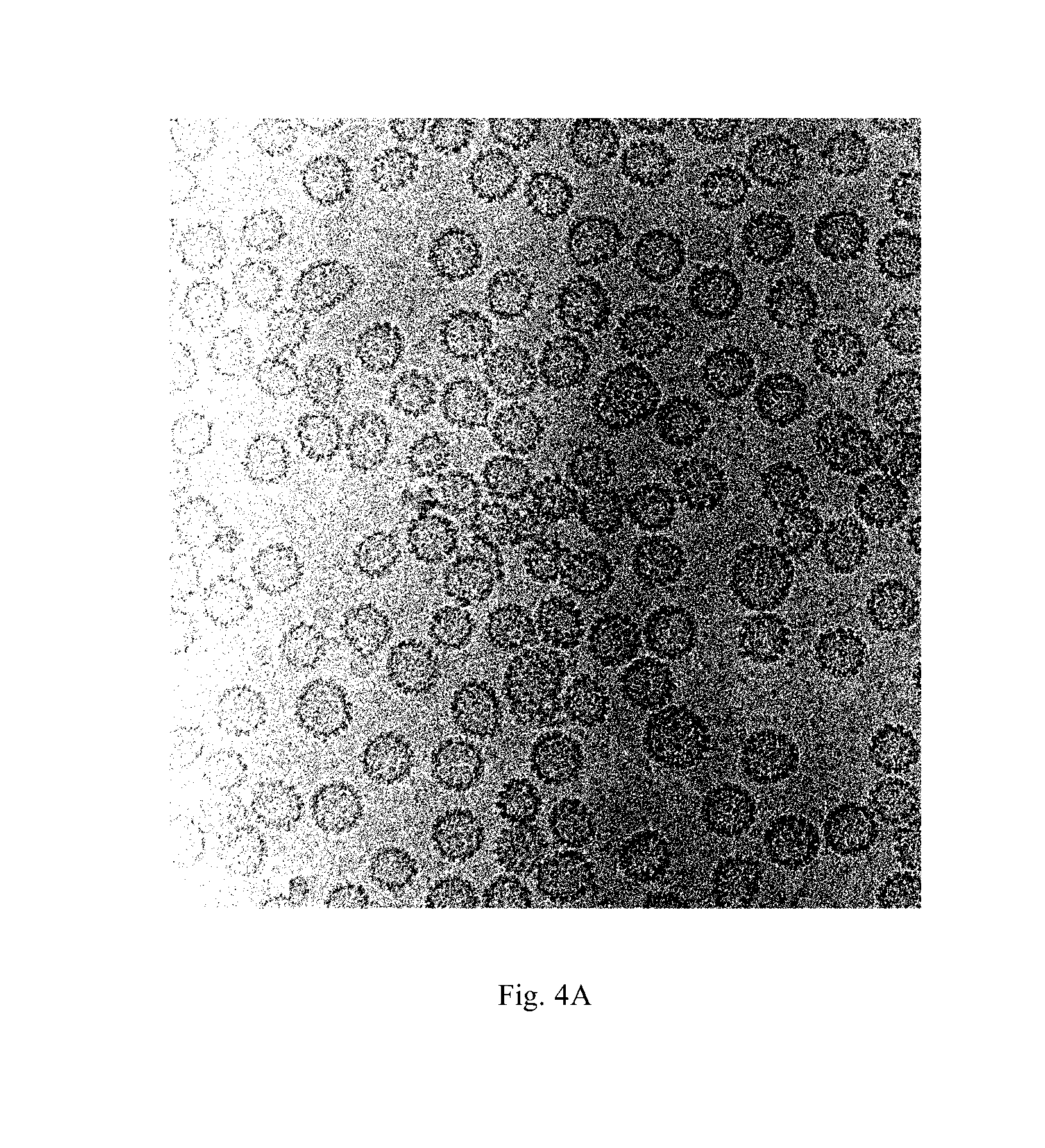Truncated L1 protein of human papillomavirus type 52
a human papillomavirus and l1 protein technology, applied in the field of molecular virology and immunology, can solve the problems of difficult industrial production on a large-scale, serious threat to the health of women, and the hpv vaccine gardasil®, and achieves low expression levels, low culturing cost, and low conformational difference.
- Summary
- Abstract
- Description
- Claims
- Application Information
AI Technical Summary
Benefits of technology
Problems solved by technology
Method used
Image
Examples
example 1
Construction of Non-Fusion Expression Vectors for Expressing the Truncated HPV52 L1 Proteins
[0083]The full-length HPV52 L1 Gene (SEQ ID NO: 30) as a template was synthesized by Shanghai Boya Bio Co. The synthesized gene fragment has a full length of 1590 bp. On the basis of the synthetic full-length HPV52 L1 gene fragment, the polynucleotides encoding the truncated HPV52 L1 proteins according to the invention were prepared.
[0084]The synthesized full-length HPV52 L1 gene was used as the template for the PCR reaction. The forward primer was 52N40F: 5′-CAT ATg CCC GTG CCC GTG AGC AAG-3′ (SEQ ID NO: 31), at the 5′ terminal of which the restriction endonuclease NdeI site CAT ATG was introduced, wherein ATG was the initiation codon in E. coli system. The reverse primer was 52CR: 5′-GTC GAC TCA CCT CTT CAC CTT CTT C-3′ (SEQ ID NO: 32), at the 5′ terminal of which the restriction endonuclease SalI site was introduced. The PCR reaction was performed in a PCR thermocycler (Biometra T3) under ...
example 2
Expression of HPV52N40C-L1 Protein on a Large Scale
[0090]The E. coli solution carrying the recombinant plasmid pTO-T7-HPV52N40C-L1 at −70° C. as prepared in Example 1 was seeded in 50 mL LB liquid medium containing kanamycin and incubated at 180 rpm and 37° C. for about 12 h. Then, the cultures were transferred to ten flasks (5 ml cultures per flask), each of which contained 500 mL LB medium containing kanamycin, and was incubated in a shaking incubator overnight at 180 rpm and 37° C., as a starter culture.
[0091]A 50 L fermenter made by Shanghai Baoxing Biological Ltd was used in large-scale culture. PH electrode of the fermenter was calibrated. 30 L LB medium was loaded into the fermenter, in situ sterilized at 121° C. for 30 minutes. Oxygen-dissolved electrode was calibrated, wherein the value was determined as 0 prior to introduction of air after sterilization and as 100% prior to vaccination after introduction of air while stirring at an initial rate of 100 rpm.
[0092]Preparation...
example 3
Preparation of HPV52N40C-L1 Protein with a Purity of about 70%
[0102]Bacteria were re-suspended at a proportion of 1 g bacteria corresponding to 10 ml lysis buffer (20 mM Tris buffer pH 7.2, 300 mM NaCl). Bacteria were disrupted by an APV homogenizer (Invensys Group) for five times at a pressure of 600 bar. The homogenate was centrifuged at 13,500 rpm (30,000 g) using JA-14 rotor for 15 min, and the supernatant (i.e. the supernatant of disrupted bacteria) was obtained. The supernatant was subjected to 10% SDS-PAGE. At this stage, the HPV52N40C-L1 protein in the supernatant had a purity of about 10% (see FIG. 1, Lane 1).
[0103]The supernatant was dialyzed by a CENTRASETTE 5 Tangential Flow Filter (Pall Co.) running at a pressure of 0.5 psi, a flow rate of 500 ml / min, and a tangential flow rate of 200 mL / min, wherein the membrane retention molecular weight was 30 kDa, the dialysis solution was 10 mM phosphate buffer pH 6.0, and the dialysis volume was three times of the volume of the su...
PUM
| Property | Measurement | Unit |
|---|---|---|
| diameter | aaaaa | aaaaa |
| molecular weight | aaaaa | aaaaa |
| loading volume | aaaaa | aaaaa |
Abstract
Description
Claims
Application Information
 Login to View More
Login to View More - R&D
- Intellectual Property
- Life Sciences
- Materials
- Tech Scout
- Unparalleled Data Quality
- Higher Quality Content
- 60% Fewer Hallucinations
Browse by: Latest US Patents, China's latest patents, Technical Efficacy Thesaurus, Application Domain, Technology Topic, Popular Technical Reports.
© 2025 PatSnap. All rights reserved.Legal|Privacy policy|Modern Slavery Act Transparency Statement|Sitemap|About US| Contact US: help@patsnap.com



